
The Cruel Trade with Slowloris
Slowloris or Plumploris are small, furry primates that have become increasingly popular as pets in recent years. But, how do these cuties become someones pet?
Most slowloris you can see in cute videos are wild-caught, if the owner is trying to convince you the slowloris is captive-bred – this might be a lie. It’s quit difficult to breed slowloris, therefore it’s highly unlikely it’s captive-bred.
All slowloris species are protected from international trade by CITES, listed in Appendix I. Eventhough they are protected by CITES and even under local legal protection, their main threat is the illegal exotic pet trade, which can lead to the risk of over-exploition of the species. Espacially species like the slowloris are at a high risk, because of their low prduction rate.
Slowloris – slow & cute & threatend
As their name might implefiy, slowloris are slow! What normally would be a defense method, became a negative habit…
They are nocturnal primates, native to parts of southeast asia, india and the phillipeans.
All Slow loris species are listed as either „Vulnerable„, „Endangered“ or even „Critically Endangered“ on the IUCN Redlist, with decreasing population Trends. The main Threats are Wildlife Trade (exotic pet Trade & traditional medicine) and Habitat loss.
Slow lorises are nocturnal animals, their eyes have adapted to see in the dark which makes being in a brightly lit room uncomfortable and distressing.
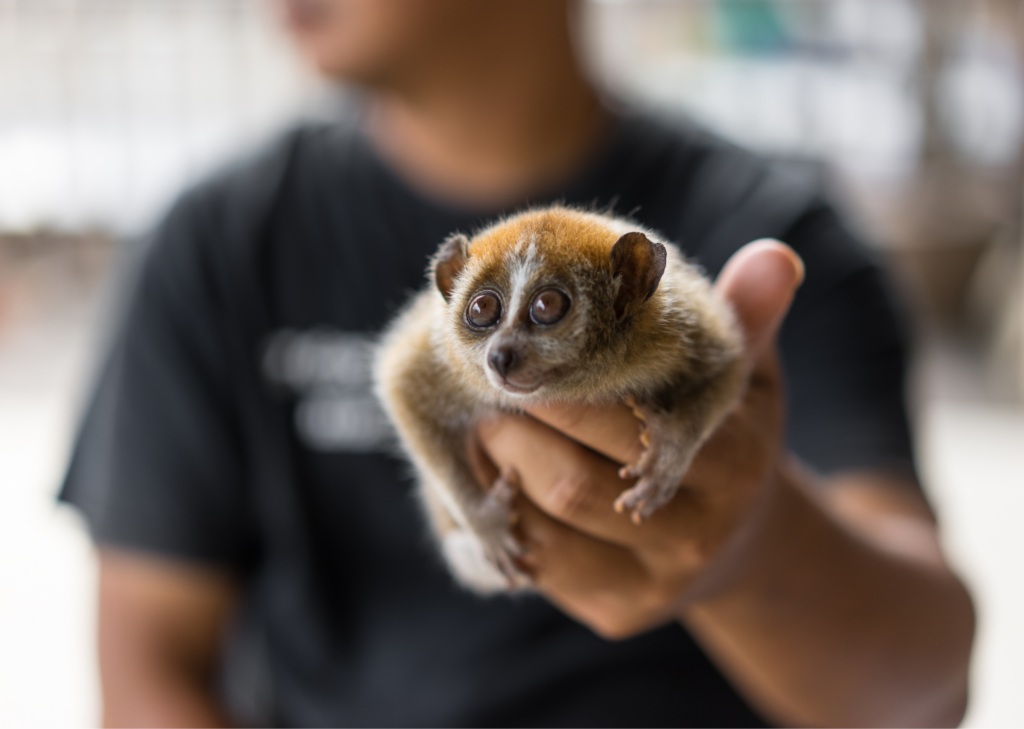

Thickeling is torture!
Million Views, thousend comments & shares…
There are many videos and images of slow lorises being kept as pets on social media. Two of the most popular videos are ‘Slow loris loves being tickled’ and ‘Slow loris eating a riceball’.
Without an understanding of the behaviour and physiology of slow lorises, it is easy to assume that these slow loris pets are happy and enjoying being tickled and eating rice balls. Sadly, this isn’t true …
The world’s only venomous primates
Lorises are the only venomous primate and this venom is secreted from a gland on the inside of their elbow. Lorises raise their arms and mix the venom with saliva before biting their victim. The bite is extremely painful and the venom can bring on anaphylactic shock and even death in humans. This slow loris is not putting its arms up to ask for more, it is terrified and trying to defend itself! Slow lorises have a toxic bite, a trait rare among mammals and unique among the primates.[7] The toxin is obtained by licking a sweat gland on their arm, and the secretion is activated by mixing with saliva. Their toxic bite, once thought to be primarily a deterrent to predators, has been discovered to be primarily used in disputes within the species.
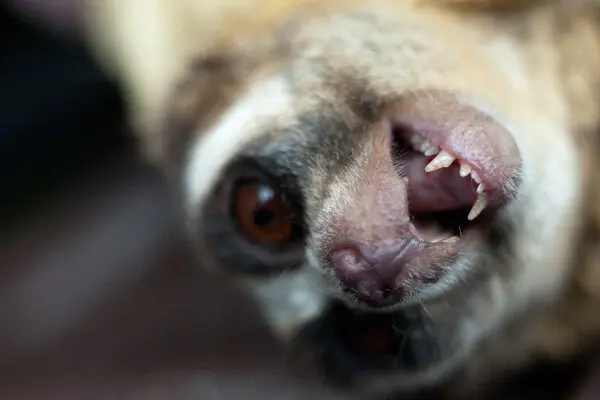
How the slow loris became someone’s pet
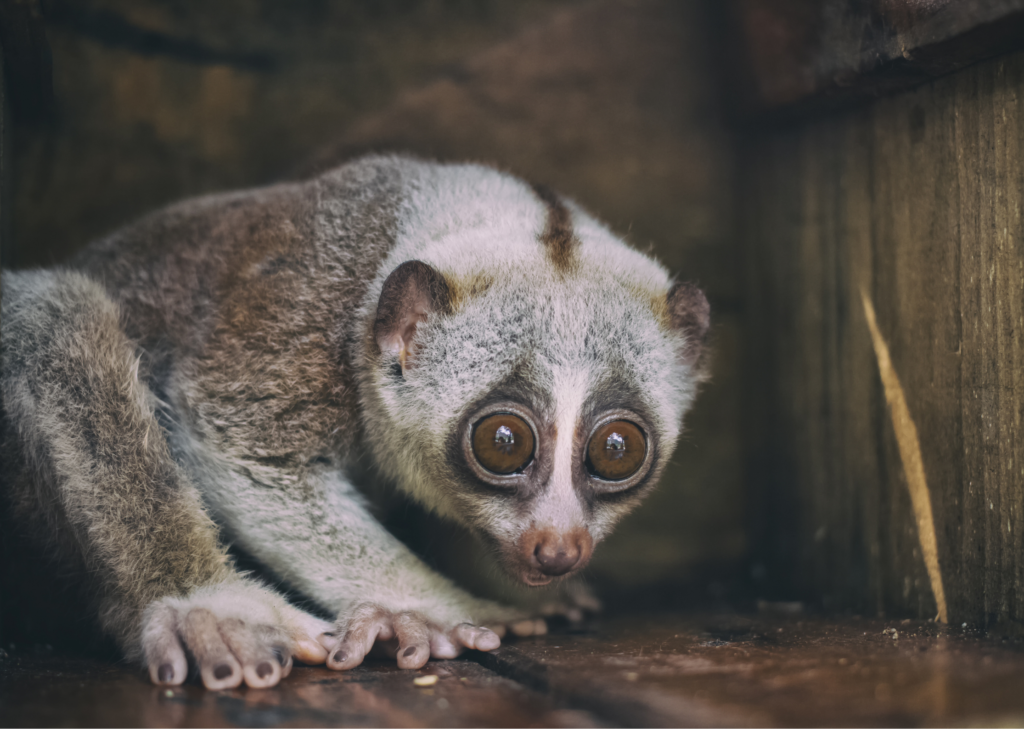
STEP 1: CAPTURE
Thousands of slow lorises are poached from the wild to be illegally sold on the street or in animal markets. Often whole families of slow lorises living in the wild will be captured for the pet trade.
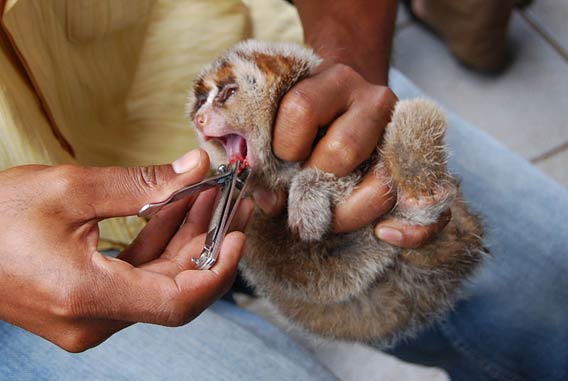
STEP 2: TEETH CUTTING
Before a slow loris is sold as a pet, its teeth are cut out using nail clippers, wire cutters or pliers with no anaesthetic. This is to make them easy to handle and to protect humans from their potentially deadly venomous bite. This is an incredibly painful procedure that often results in infection or death through blood loss.
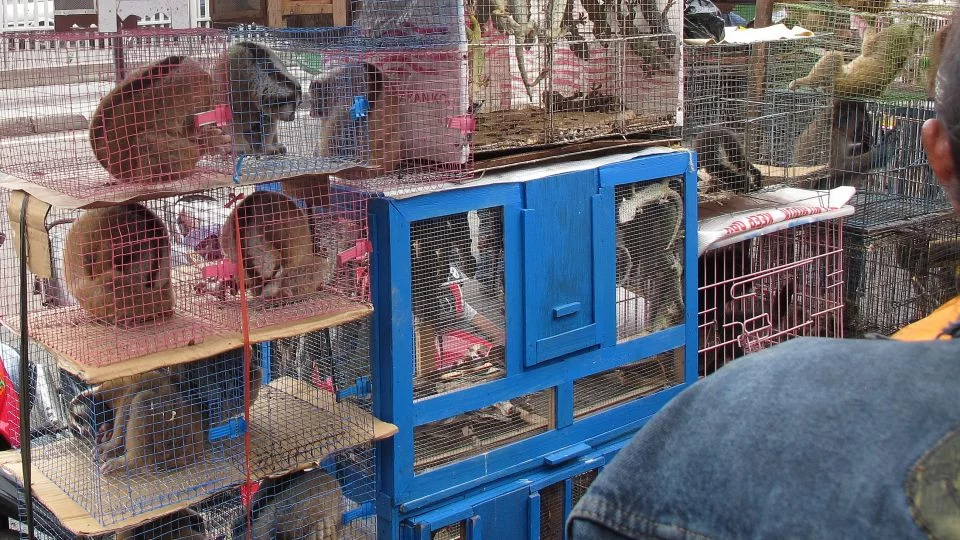
STEP 3: TRANSPORT
Lorises are transported to markets in dark, overcrowded and poorly ventilated containers. The stress of this transport results in a mortality rate of between 30% and 90%. Often captured lorises are found in crates alongside the bodies of other lorises that have died.
I cited those 3 Steps from: https://www.internationalanimalrescue.org/truth-behind-slow-loris-pet-trade#
The Importance of Ending the Trade in Plumploris
It is essential to raise awareness about the cruelty associated with the trade in plumploris and to discourage people from buying these animals as pets. Instead, people should support organizations that work to protect wildlife and their natural habitats. By ending the trade in plumploris, we can help protect the welfare of these small primates and prevent the disruption of entire ecosystems.
What we can do about it:
- Not “liking” loris videos, but instead offering conservation-related comments.
- Education as a key! Educate friends & family, as well as people on social media.
- If you want to see slowloris on a holiday trip – book a eco friendly conservation encounter ( More in the conclusion)
Conclusion
The wildlife trade, espacially the exotic pet trade need better enforcement and monitoring. We, as social media user, can help by educating and spreading awerness to end the demand for exotic pets!
In 2019 I was on a backpacktrip trough Sri Lanka with my parents. Sri Lanka is home to the slender loris, a genus of loris native to India and Sri Lanka and related to the slowloris. As curious wildlife lovers we booked an 1 hour „Wildlife encounter“ with the primate research center in Polonnaruwa. At the sun was setting and it got dark, we went to a small forest, looking for the slenderloris with red light (animals can’t see redlist, so it doens’t disturb them). It was one of my greatest wildlife encounters!

